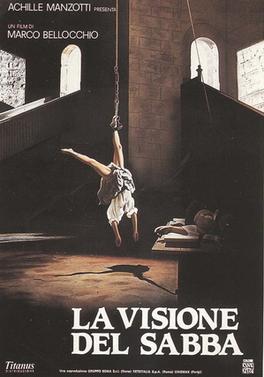The Witches' Sabbath
The Witches' Sabbath is a term that has been used throughout history to describe gatherings of those practicing witchcraft, often depicted as involving the worship of Satan. These gatherings are a prominent element of the folklore and mythology surrounding witchcraft, particularly in the context of the European witch trials in the Early Modern period. The concept has been vividly depicted in art, literature, and later in film and popular culture, reflecting societal views on witchcraft, paganism, and heresy.
Origins and Historical Beliefs[edit | edit source]
The idea of the Witches' Sabbath is believed to have originated in the late Middle Ages in Europe, with the first known accounts appearing in the 15th century. It was during this time that the Christian Church intensified its efforts to combat heresy, leading to the widespread persecution of individuals accused of witchcraft. The Witches' Sabbath was often described as a diabolical gathering where witches would renounce Christianity, pledge their allegiance to Satan, and perform a variety of malevolent acts, including cannibalism, casting spells, and engaging in orgiastic rituals.
Depictions in Art and Literature[edit | edit source]
Throughout the centuries, the Witches' Sabbath has been a popular subject in art and literature, serving as a canvas to explore themes of morality, fear, and the supernatural. Notable examples include the paintings of Francisco Goya, who depicted the Sabbath in a series of dark, haunting images that reflect the fear and fascination with witchcraft of his time. In literature, the Witches' Sabbath is often used to explore the boundaries of societal norms and the human fascination with the occult.
Modern Interpretations[edit | edit source]
In modern times, the concept of the Witches' Sabbath has evolved, often stripped of its original diabolical connotations. In contemporary witchcraft and Paganism, gatherings that might historically have been labeled as Sabbaths are now seen in a more positive light, focusing on spirituality, the celebration of nature, and the practice of magic for benevolent purposes. This shift reflects broader changes in societal attitudes towards witchcraft and minority religions.
Cultural Impact[edit | edit source]
The Witches' Sabbath has had a lasting impact on popular culture, inspiring a wide range of works in film, television, and literature. It serves as a symbol of the otherworldly and the mysterious, often used to explore themes of power, freedom, and the subversion of societal norms. The enduring fascination with the Sabbath and its associated imagery highlights the human attraction to the unknown and the supernatural.
Conclusion[edit | edit source]
The Witches' Sabbath, with its rich history and complex symbolism, continues to fascinate and inspire. From its origins as a feared and misunderstood gathering to its modern reinterpretations, it reflects changing attitudes towards witchcraft, religion, and the supernatural. As a subject of study, it offers insights into the fears and fascinations of societies past and present, making it a compelling topic for exploration in various fields of study.
| The Witches' Sabbath Resources | ||
|---|---|---|
|
| |
Navigation: Wellness - Encyclopedia - Health topics - Disease Index - Drugs - World Directory - Gray's Anatomy - Keto diet - Recipes
Search WikiMD
Ad.Tired of being Overweight? Try W8MD's physician weight loss program.
Semaglutide (Ozempic / Wegovy and Tirzepatide (Mounjaro / Zepbound) available.
Advertise on WikiMD
WikiMD is not a substitute for professional medical advice. See full disclaimer.
Credits:Most images are courtesy of Wikimedia commons, and templates Wikipedia, licensed under CC BY SA or similar.Contributors: Prab R. Tumpati, MD


